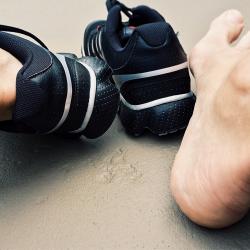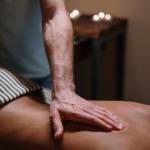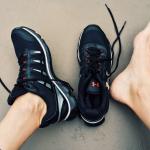In this blog post, we identify common running injuries:
Many, if not most running injures can be traced back to determine some causative factors and some aggravating factors. Some of the more common causative or aggravating factors include:
- Training errors
- Inappropriate footwear
- Inadequate flexibility
- Inadequate strength
- Poor biomechanics
Below is a list of the most common forms of running pathologies and how they present.
Plantar Fascitis
The most common symptom is pain in the bottom of the heel when first arising in the morning or after being seated for a period of time. The pain usually dissipates fairly quickly after moving about, and in some cases may return later in the day after prolonged standing. Many people describe the first symptoms as feeling like a "stone bruise" on the bottom of the foot.
Achilles Tendonosis
The first symptoms are a vague, dull, ache in the tendon after running. There is also frequently stiffness and aching in the tendon upon first arising in the morning. If ignored, the symptoms usually worsen to the point where pain is present on the initiation of running and increases with sprinting. Untreated, the symptoms eventually become present at all times and the individual is unable to run due to acute pain, and may be unable to walk without pain.
Patello-femoral pain syndrome
The early symptoms are usually a dull ache in and around the patella (knee-cap), after running. There may be stiffness in the knee as well, partly due to a swelling of the inflamed tissues. Most athletes will notice large amounts of crepitus or clicking from the knee cap especially on squatting or sit to stand movements. Depending on the biomechanics of the individual runner, the pain may be localised to one area or another of the patella.
Tibial Stress Syndrome
Anterior tibial stress syndrome symptoms usually consist of aching in the muscle on the front outer part of the shin during running, and gradually persist until there is a defined and sharp pain along the front outer tibia (shin bone) even with walking.
Posterior tibial stress syndrome symptoms usually consist of an aching that occurs along the inner front surface of the shin bone and may progress down to the arch of the foot. Generally the pain occurs when you first run, and may subside later in the run only to return later. As the inflammation worsens, the symptoms are present with walking and may also present as a tenderness and stiffness when first arising.
Iliotibial Band Syndrome
The symptoms include discomfort in the lower outside thigh or knee that is first present only when running. As symptoms progress, athletes will also notice discomfort with everyday activities such as descending stairs. You may also notice a clicking sensation located in the lateral compartment of your knee.
Metatarsal Stress Syndrome
The symptoms of metatarsal stress syndrome generally start as an aching sensation under the ball of the foot (where the toes join the foot). This is usually first felt only on long runs or during speed work, but is also commonly felt in dress style shoes that typically have a very narrow toe box. The symptoms are relieved by removing the shoes, only to return the next time they are worn or during the next run. Some people describe the early sensation as feeling as if their socks have "wadded up" under the ball of the foot. The symptoms can become more frequent and intense, eventually causing discomfort with most activities.
Stress Fractures
The symptoms of a stress fracture include pain that is worst when exercising but may also be present at rest. Night pain is often a common symptom with this pathology. The pain is generally quite localised to a specific bony area and is most noticeable when the area is pressed or tapped.
Our Barnes Clinic
Our clinic is located in Barnes, South-West London and is easily accessible by public transport.
For more information including parking and other practicalities see our Barnes clinic page
Book an Appointment
Booking an appointment with one of our therapists is quick and easy. There is no long waiting time and you don’t need a referral from your GP.









